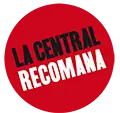NSK. From Kapital to Capital


NSK. From Kapital to Capital

Sense existències ara
Rep-lo a casa en 2 / 3 dies per Missatger o Eco Enviament*Sobre el libro NSK. From Kapital to Capital de publicado por MIT al 2015:
In 1984, three groups of artists in post-Tito Yugoslavia—the music and multimedia group Laibach, the visual arts group Irwin, and the theater group Scipion Nasice Sisters Theater—came together to form the Neue Slowenische Kunst (NSK) art collective.Adopting the symbols, codes, appearances, and discourses of fascism, nationalism, state power, socialist-realist, and avant-garde art, and pushing the strategies of overidentification and subversive affirmation to their limits, NSK exposed the common foundations of various regimes, systems, and ideologies, while affirming that “art and totalitarianism are not mutually exclusive.” Employing music, video, film, exhibitions, writing, graphic design, architecture, theater, and public relations to probe the aesthetic possibilities of declining socialism and proliferating capitalism, NSK introduced an idiosyncratic version of postmodernism (the Retro-Avant-Garde) into the globalizing cultural sphere.
Combining primary documents, period artifacts, critical essays, and contextual notes, NSK from Kapital to Capital documents NSK’s collective practice during the final decade of Yugoslavia—from the first (and banned) Laibach concert (1980) in a small proletarian mining town in Slovenia to the series of projects launched by individual NSK groups entitled Kapital (1991-92). This illuminating chronicle of NSK’s work and its reception is produced in conjunction with the first major museum exhibition devoted to NSK. Designed by Novi Kolektivizem (New Collectivism), the graphic design section of NSK, the cover of each individual copy of the book is printed with a custom detail; no two covers exactly are the same.
El llibre NSK. From Kapital to Capital de pertany a la matèria
Veure altres ressenyes de Art
Ressenya
Marc Fumaroli
“Mundus muliebris”. Élisabeth Louise Vigée Le Brun, pintora del Antiguo Régimen femenino
Vigée Le Brun era hija de padre pintor y, además, esposa de un marchante de arte, hecho este último que la hacía candidata inaceptable en la Academia de pintura y escultura.

Ressenya
Marta Piñol Lloret
Mitos e imágenes
Las imágenes que nos rodean pueden surgir o pueden adquirir un significado mítico. Imágenes próximas, imágenes místicas, imágenes de empoderamiento, imágenes sobre los principios y los finales, tod...

Ressenya
Sarah Watling
Mañana quizá el futuro
Mañana quizá el futuro nos permite a los lectores de hoy entrever cómo en la historia se da constantemente una lucha por el relato, además de vislumbrar a una generación rebelde dispuesta ...

Ressenya
Joana Masó y Éric Fassin
Elsa von Freytag-Loringhoven. La artista que dio cuerpo a la vanguardia
Alrededor del año 2000, el hallazgo de varios documentos inéditos hizo que la crítica planteara la posibilidad de que la Fontaine (1917), obra firmada por R. Mutt, y generalmente atribuida...






